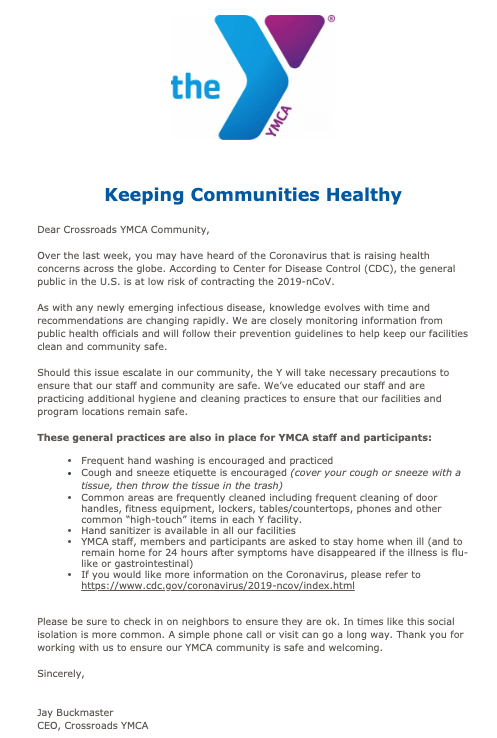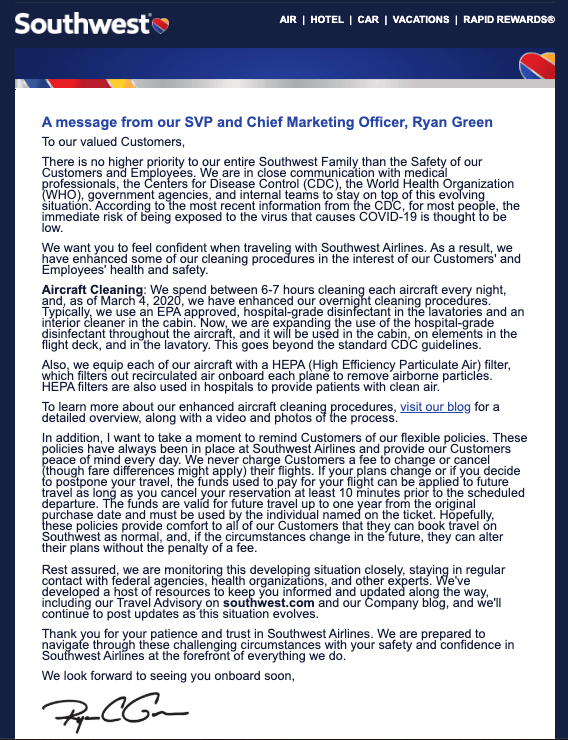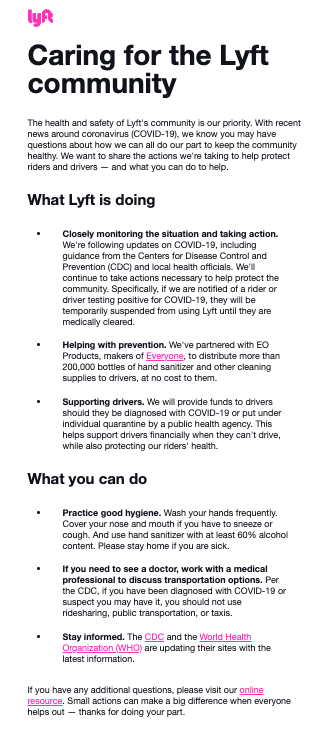Guest Author: Lori Vaughn – Director, Compliance and Deliverability at ActiveCampaign
The impact of COVID-19 is yet to be fully measured, tracked, and understood. However, we are beginning to see businesses make adjustments to help protect their employees and customers, including:
- Cancellation of non-essential travel
- Postponement of national conferences
- Response plan emails detailing what to expect in the coming months
Many businesses are sending emails to let their customers know how COVID-19 will affect the business, including information on preparedness and a potential response plan. Just as you may communicate with your employees, being transparent with your customers can help ease their discomfort.
If you choose to reach out to your customers in response to the COVID-19 outbreak, here are some tips to help you craft your email communication. Please note that this is advice on the tone, style, and structure of your message – not the specific messaging you use. Do not offer medical advice, but it may make sense to direct customers to the latest guidance from the World Health Organization or CDC.
- Empathize: Your customers may be scared, confused, or misinformed. Empathizing with your customers goes a long way to help them understand that you care and have their best interests in mind. Your tone should convey that your employee and customer safety is the highest priority.
- Present a plan: Your customers may be interested in understanding hygiene protocols of the business and how you are ensuring compliance. Customers may be curious about how the business is monitoring the situation and what might happen if issues arise. They might also have questions about any penalties related to short-notice cancellations.
- Be authentic: Be transparent about the impact to your business, such as disruptions in your manufacturing supply chain or price changes to in-demand products.
- Unconventional problem-solving: This is a time to start thinking creatively. Is there a way to organize regional or virtual conferences? If one product line is heavily impacted, can you shift marketing efforts to another product line? Whatever the unique challenge your business is facing, consider ways to find alternate solutions that meet your customer needs.
- Think ahead: How businesses respond in tough situations can have a big impact on current and future customer sentiment. When making decisions regarding the impact of the COVID-19 outbreak on your business, be sure to consider the long-term impact of those choices.
Heavily-impacted industries (such as the travel sector) may need to take additional measures. This might mean sending fewer emails to audiences that are not currently receptive.
When changing email cadence, frequency, volume, or content, it’s important to understand the possible impact to your email reputation and deliverability. Sudden spikes or valleys in sending volume can skew the data that Mailbox Providers (Gmail, Microsoft, Oath) use to measure the health of a sending IP or domain. Here’s how best to handle changes in email frequency or volume:
- Ramp down: If possible, consider a ramp down strategy that lets you gradually decrease email volume over time. This will help prevent your email reputation from going over the proverbial cliff.
- Send to engaged customers: Prioritizing engaged customers is always important — especially when changing email volume or frequency. Create segments of engaged contacts and craft specific emails tailored to them. Regularly sending emails to hyper-engaged segments will help keep your email reputation healthy with consistent volume.
- IMPORTANT: When you decide to start sending more regularly again, ramp up very carefully. If your business requires a hiatus on sending, when you are ready to send at full volume again, consider an IP warming strategy to reintroduce your IP/domain to the Mailbox Providers.
Mailbox Providers are analyzing engagement data as the the primary driver for inbox placement, however it is possible for your Coronavirus email to be inadvertently caught in spam filters. When crafting your emails, think about these tips below to achieve the best results.
- Minimize external URLs: Adding external links to your emails can be risky. Spam emails can have links to legitimate online resources and if Mailbox Providers are scanning the content, they may not be able to distinguish between a legitimate email and a malicious email with the same link. Additionally, adding third-party URLs can be problematic because the URL may have a bad reputation. Unless your business requires linking third-party URLs within the content, it might be a good idea to omit them.
- Don’t be alarmist: The goal of these emails should be to soothe customer concerns. If the tone of the email incites fear, it may flag Mailbox Provider spam filters. Be thoughtful about your design choices and minimize unnecessary capitalization, bold fonts, loud banners, images, and graphics.
- Be careful about sharing health advice: You can share general health advice such as washing hands, using hand sanitizer, and acting with courtesy to others if you are sick. Refrain from declaring medical cures, quoting medical “experts,” or providing medical advice.
Spammers see opportunities everywhere. Don’t be tricked into clicking a fraudulent Coronavirus email. Educate yourself on best practices and common techniques of spammers.
- Coronavirus phishing emails: How to protect against COVID-19 scams
- Hackers Target Companies With Coronavirus Scams
Developing a playbook in response to a global incident is key to your business’s longevity and success. Use this current situation to sharpen your incident response skills and develop a guide for future global incidents. Stay connected to how other brands are approaching their business challenges and customer communications to iterate on your current and future response plans.
Content Samples:







